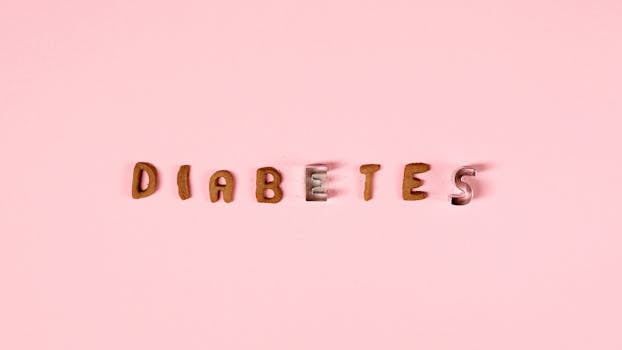Image Keywords
Tools for Finding Image Keywords
Finding the right image keywords is a crucial step in optimizing your visuals for search engines. Using effective tools can simplify this process considerably. Here are some of my top picks based on experience and results.
Google Keyword Planner is a classic choice. It helps you uncover high-volume keywords related to your images. Simply input a subject, and the tool generates a plethora of keyword ideas, complete with search volumes. Be sure to analyze the competition as well—this factor can shape your strategy.
Another great tool is SEMrush. Known for its comprehensive suite of SEO tools, SEMrush allows you to explore image keywords alongside competitors. Enter a website, and you can see what image-related keywords drive traffic to it. This competitive analysis can uncover opportunities you may have missed.
Don’t overlook Ahrefs for keyword research. Its database is vast, and the keyword explorer can reveal lucrative phrases and questions people are asking. Image keywords that match user intent can gain traction quickly, giving your visuals an edge.
Image-specific tools like Pinterest Trends are invaluable, particularly for visual-centric businesses. You track which keywords are trending on Pinterest, allowing you to customize your approach to align with what users want to see.
I also find Google Image Search to be immensely helpful. By searching for an image or related topic, you can observe what keywords others are using in their alt texts and captions. This manual approach may take time but can reveal insights that automated tools might miss.
Additionally, consider Answer the Public for brainstorming keyword ideas. This tool generates questions, prepositions, and comparisons related to your keyword, exposing potential image keywords that can resonate with your audience.
Using these tools together—not just relying on one—maximizes your chances of finding high-impact image keywords. With a strategic approach, your images can effectively draw organic traffic and enhance your SEO efforts.
Analyzing Competitors’ Image Keywords
Analyzing competitors’ image keywords can reveal invaluable insights into your own SEO strategy. You’ve likely heard that images play a crucial role in enhancing content, but it’s the keywords associated with those images that significantly impact visibility in search results. By scrutinizing how competitors label and optimize their images, I can uncover potential gaps in my strategy and improve my own keyword usage.
Firstly, I recommend using tools like Ahrefs or SEMrush to explore competitors’ image keywords. These platforms allow me to identify the specific keywords they are ranking for and analyze their relevance and performance. This isn’t just about copying what others do; it’s about gaining a competitive edge. Identifying successful keywords can inspire new ideas for my own SEO content.
Next, I pay attention to the user intent behind image keywords. What problems are users trying to solve, and how can I address these with my own images? For example, if a competitor’s images rank well for ‘best dog training tips,’ I can create original content that answers that very query, ensuring my images align with my articles’ intent. Matching image keywords with the search intent leads to improved chances of ranking.
Moreover, don’t overlook alt text. Analyzing how competitors utilize alt text provides a clearer picture of their SEO strategies. Alt text serves not only as an accessibility feature but also as a critical SEO component. If competitors are leveraging descriptive and keyword-rich alt text, it shows the importance of not neglecting this area. Optimizing my alt text can lead to better rankings and visibility in image searches.
Ultimately, understanding how competitors use image keywords isn’t merely about imitation; it’s about honing my unique approach to SEO. My goal is to create compelling, optimized images that resonate with my audience while efficiently leveraging competitor insights to refine my tactics. By adopting a strategic mindset toward image keywords, I enhance both my rank and user engagement.
Research has shown that exposure to Instagram images is harmful for women's body image. Although Instagram consists of photos of both peers and celebrities, …
A picture is worth a thousand words: The effect of viewing celebrity …
The user can exclude exposures using the "exclude" keyword. Two rebinning methods are available. GRID assumes that all images are oriented in the same direction …
Keywords ( 3 ). Showing records 1 – 3 Page 1 out of 1. Image Keyword. Astronauts. Male astronauts. Training. NASA logo image · https://nlsp.nasa.gov. Shared …
It shall specify the number of bits that represent a data value. KEYWORD: BLANK REFERENCE: FITS Standard STATUS: reserved HDU: image VALUE: integer COMMENT: …
Best Practices for Optimizing Image Alt Text
Using effective image alt text is crucial for SEO and accessibility. Let’s cut to the chase: alt text is not just a checkbox you tick off; it’s an opportunity to communicate the essence of your images to search engines and users alike. I believe a well-crafted alt text can significantly impact your site’s visibility and user experience.
First off, be descriptive. Alt text should be specific enough to convey what’s happening in the image. Instead of vague descriptions like ‘image of a dog,’ opt for ‘golden retriever playing in the park.’ This gives search engines pertinent information about the image while providing context to visually impaired users.
Keep it concise, ideally under 125 characters. You want to be informative without overloading the reader. Long descriptions can be cut off by screen readers and lose their effectiveness.
Avoid keyword stuffing. Yes, keywords are vital for SEO, but cramming them into alt text can backfire. It’s better to focus on clarity over SEO tricks. Use natural language that accurately describes the image.
Additionally, remember the context of the image on the page. The same image might serve different purposes on different pages, so adjust your alt text accordingly. Think about how the image relates to the surrounding content.
Using unique alt text for each image is also essential. Duplicate alt text across multiple images can confuse search engines about what’s relevant to each image, which can hurt your site’s ranking.
Lastly, consider your audience. Craft alt text that resonates with the user experience you want to create. Ultimately, well-optimized alt text is an extension of your content strategy.
If you want to rank for multiple keywords phrases with your website … Always describe your image and video media using alt tags, or alternative text …
Five Ways to Improve Your Site’s Ranking (SEO) | Michigan Tech
Alt Text is a brief text description of an image. · Alt Text is read by screen readers (or other assistive tech) to provide information about the image's purpose …
Write helpful Alt Text to describe images | Digital Accessibility
Dec 1, 2021 … Avoid filling alt attributes with keywords (keyword stuffing) as it results in a negative user experience and may cause your site to be seen as …
Image SEO: How to optimize your alt text and title text • Yoast
First, find the image you like on the TSU Flickr site. (Note: If you can't … In the "keywords" box, enter as many words about your web page as you …
Mar 2, 2017 … Save your changes. description, gadgets, header image setting, keywords, left navigation, …
Apr 3, 2024 … Also called alt tags and alt descriptions, alt text is the written copy that appears in place of an image on a webpage if the image fails to …
Image Alt Text: What It Is, How to Write It, and Why It Matters to SEO
… image is indexed at all, and for the right keywords. Use HTML image … tags for each page. You can help us improve the quality of the title link …
Image SEO Best Practices | Google Search Central | Documentation …
Open Graph Markup. Most content is shared to Facebook as a URL, so it's important that you mark up your website with Open Graph tags to take control over how …
Key factors that influence image keyword ranking
Understanding the crucial elements that affect how images are ranked in search engine results is essential for maximizing visibility.
- Image File Names: The naming convention of images plays a significant role. Using descriptive and relevant keywords in your file names can boost your ranking potential.
- Alt Text: Optimizing alt text is non-negotiable. It provides context to search engines, allowing them to understand what the image depicts, which directly influences its ranking.
- Image Size and Quality: Larger, high-quality images might rank better, but site speed is crucial. Balancing quality and load speed is vital for image optimization.
- Contextual Relevance: Placing images within relevant, keyword-optimized content helps search engines associate that image with the topic at hand, enhancing its ranking capability.
- User Engagement: Images that attract user interaction—like shares and comments—improve ranking potential. Engaging images encourage more time on the page, signaling quality to search engines.
- Image Format: Certain formats, like WebP, offer better loading efficiency. Choosing the right format can influence your site’s speed and consequently your images’ rankings.
Common Mistakes to Avoid with Image Keywords
One of the biggest blunders in SEO is neglecting image keywords altogether. Images are not just supplemental to your content; they can significantly influence search rankings and user engagement if optimized correctly. Keywords for images should be carefully chosen and strategically included in image filenames, alt text, and captions. Failing to use descriptive filenames can severely limit your visibility in image searches. For instance, naming an image ‘IMG_1234.jpg’ says absolutely nothing about its content.
Another common mistake is keyword stuffing in alt text. While it’s crucial to include relevant keywords, overloading alt text can lead to penalties from search engines. Alt text should be concise, clear, and descriptive, focusing on a few select keywords that accurately represent the image content.
Many people also overlook the importance of context. Simply adding keywords doesn’t guarantee visibility; they need to align with the surrounding content. If the image complements your text, you increase your chances of being found in related searches. Context can sometimes be a game changer.
Not optimizing images for speed is another mistake that should be avoided. Large image files can slow down your website, leading to higher bounce rates. Compressing images without sacrificing quality is critical for both user experience and SEO rankings.
Lastly, forgetfulness regarding image sitemaps can also hurt your SEO efforts. Submitting an image sitemap to search engines can help them discover your images faster, thereby amplifying your content’s reach. Ignoring this step means missing out on potential traffic.
By being mindful of these common mistakes with image keywords, you’ll solidify your SEO strategy and enhance visibility while delivering a better user experience. Don’t leave image optimization to chance; take proactive steps to make it work for you.
Top 5 Image Keyword Tools
These tools can significantly enhance your image SEO strategy, making your images more discoverable in search results.
- Google Keyword Planner: This tool is perfect for finding keywords that match your image content. By analyzing search volume and competition, I can pinpoint the best keywords to use in image alt tags and filenames.
- Ahrefs: Ahrefs is not just for backlinks. Its keyword explorer allows me to see the keyword difficulty and search volume, ensuring that I’m selecting terms that align with my audience’s interests. It’s especially helpful for optimizing images within blog posts.
- SEMrush: This tool’s position tracking feature helps me monitor how my images rank for specific keywords over time. By integrating this tool, I can maintain an edge in image search optimization.
- Moz: What I appreciate about Moz is its comprehensive keyword analysis. It supplies me with insights into related keywords and their potential, which is vital for enhancing the visibility of my images.
- Pinterest Trends: This unique tool allows me to pinpoint trending keywords on Pinterest. With images playing a crucial role on this platform, understanding what visuals are on the rise can shape my image SEO strategy effectively.
Aug 25, 2023 … Start off with a few simple words, and then iterate by adding new keywords. Exclude from Image: Once you have seen an image, you can then …
Feb 10, 2022 … You can add the title of your image in post-processing, either on your phone, desktop or laptop, depending on the editing software you use.
Using Structured Data for Images
Structured data is a game changer for image SEO. It enhances how search engines interpret your content, making your images more discoverable. By employing schema markup, you can give search engines explicit details about your images, such as their subject matter, format, and even licensing information. This added layer of information greatly increases the chances of your images appearing in rich results.
Many webmasters fail to use structured data effectively for their images, often missing a significant opportunity to stand out in search results. It is crucial to implement image schema markup, such as ImageObject or CreativeWork. This tells search engines exactly what your images represent, which can lead to better rankings and visibility.
Another benefit of structured data for images is its impact on your overall site performance. By improving click-through rates and user engagement, structured data not only boosts image visibility but can also enhance your website’s overall SEO. Users are more likely to interact with rich results, which can drive more organic traffic to your site.
Incorporating structured data isn’t arduous; there are many tools, including Google’s Structured Data Markup Helper, that facilitate the process. Once your schema is in place, validate it using the Rich Results Test tool to ensure everything is functioning correctly.
Many SEO practitioners overlook this critical aspect, but consistently adding structured data to your images can yield impressive results. Don’t underestimate the power of structured data for images—it’s an essential part of an effective SEO strategy.
Impact of image optimization on user experience
Image optimization plays a critical role in enhancing user experience on websites, influencing various aspects of site interaction and satisfaction.
- Faster loading times are crucial for retaining visitors. A site that takes too long to load can drive users away, leading to higher bounce rates.
- Optimized images improve responsiveness across devices. With mobile usage rising, ensuring images adapt to different screen sizes is essential for user satisfaction.
- High-quality visuals enhance engagement. Users are more likely to stay on a page with sharp, relevant images that draw their attention and convey information effectively.
- Better SEO rankings result from optimized images. Search engines prioritize fast-loading pages and that can lead to increased organic traffic.
- User trust is built through professional-quality imagery. Poorly optimized or pixelated images can diminish credibility and hinder conversions.
How to Choose Effective Image Keywords
Choosing effective image keywords is crucial for improving your SEO and driving organic traffic. I’ve learned that optimizing images isn’t merely about appealing visuals; it’s about making those visuals discoverable. Start by thinking like your audience. What phrases would they search for? Use tools like Google Keyword Planner or Ubersuggest to find relevant keywords that have decent search volume but aren’t overly competitive.
Another strategy I use is leveraging descriptive names. Instead of naming your image ‘IMG_1234.jpg,’ go for something like ‘red-velvet-cake-slice.jpg’. This not only helps search engines understand your content better, but it also improves user experience. Make sure to include your primary keyword in the alt text of your images as well; this is often an overlooked aspect of image optimization that packs a punch.
It’s vital to focus on long-tail keywords too. These phrases are more specific and often result in better conversions. For instance, instead of just focusing on ‘cake’, think ‘gluten-free chocolate cake recipe.’ This approach captures more targeted traffic.
Lastly, always keep an eye on your analytics. Monitor which keywords are driving traffic and adjust your strategy accordingly. Image keywords may seem small, but they’re a key ingredient in your SEO strategy that shouldn’t be ignored.
Future Trends in Image SEO
The future of image SEO is bright and filled with exciting opportunities. As we progress into an era increasingly dominated by visual content, optimizing images for search engines is becoming essential. One major trend is the shift towards AI-driven optimization. Imagine algorithms that can analyze images and automatically suggest keywords or descriptions! This will reduce the manual workload while enhancing the effectiveness of SEO efforts.
Another noteworthy trend is the rise of visual search. Platforms like Google and Pinterest are investing heavily in this technology, making it crucial for website owners to adapt their strategies. Optimizing images for visual search involves using clear, descriptive filenames and alt text. Such practices will not only make images easier to discover but also enhance accessibility.
Furthermore, mobile optimization will remain a critical focal point. With the majority of online searches happening on mobile devices, ensuring images load quickly and display correctly is non-negotiable. This means using formats like WebP or accommodating responsive design principles to cater to various screen sizes.
Lastly, as social media continues to integrate e-commerce, images will play a significant role in driving sales. Businesses that leverage user-generated content and optimize visuals for their social media platforms will certainly see an uptick in engagement and conversion rates. Overall, adapting to these trends is essential for anyone looking to maintain a competitive edge.
Importance of Image Keywords in SEO
Image keywords are a game-changer for SEO. Most people overlook the potential of images when they optimize their sites. Implementing proper keywords in your image file names and alt attributes can significantly boost your visibility in search results. Search engines cannot interpret images the way we do; they rely on text to understand what the images represent. This is where image keywords come into play. They provide context, helping search engines index your content correctly.
Consider this: every time you upload an image without a keyword, you miss out on a chance to attract visitors. Including relevant keywords in image descriptions not only improves your SEO but also enhances user experience. For instance, if someone is searching for “best chocolate cake recipe” and your image is appropriately tagged, you have a higher chance of appearing in those search results.
Additionally, optimizing images can improve your website’s load speed, which is crucial for ranking. Compressed images that still maintain quality paired with keywords enhance your site’s performance. Faster loading times can lead to lower bounce rates and higher engagement. When people stay on your site longer, this signals to search engines that your content is valuable.
Lastly, think about social media. Optimized images shared on platforms can drive traffic back to your site. When users encounter your images with keywords, they are more likely to click through. By neglecting image keywords, you lose out on both search engine visibility and social media traction. Mastering the use of image keywords is not just a tactic; it’s an essential aspect of a successful SEO strategy.
Understanding Image Keywords
Image keywords are essential for SEO. They play a crucial role in how search engines index your images, which ultimately affects your website’s visibility. Choosing the right keywords for your images can amplify your content’s reach and improve user experience.
Image keywords primarily consist of two components: file names and alt text. The file name should be descriptive and relevant to the image, encapsulating the key idea or subject matter. For instance, instead of naming a file “IMG_1234.jpg,” opt for something like “blue-widget-nyc.jpg”. This gives search engines context about your image.
Alt text, or alternative text, serves a similar function. It’s a textual description that appears in place of an image when it fails to load. More importantly, alt text improves accessibility for users using screen readers. Craft this text with care: include keywords that accurately describe the image while remaining succinct. Avoid keyword stuffing, as this can backfire and negatively impact your SEO.
Using relevant image keywords also enhances the likelihood of appearing in Google Image Search. When users search for specific terms, images tagged with appropriately chosen keywords will surface in the results, adding potential traffic. This is a simple yet powerful method to increase organic traffic.
Moreover, incorporating image keywords can enhance your overall content strategy. An image with compelling keywords can serve as a visual anchor that complements your written content. Therefore, it’s vital to align your image keywords with content topics.
In essence, integrating effective image keywords into your SEO efforts is non-negotiable if you seek to improve your online presence. This practice not only boosts search rankings but enriches user engagement, making it a win-win for anyone serious about SEO.
The Role of Image File Names in SEO
Image file names are crucial for SEO. Many people overlook this aspect, but a well-named image can significantly boost your search engine rankings. Instead of using generic file names like “IMG_1234.jpg,” consider descriptive names that include relevant keywords. For instance, renaming an image to “blue-running-shoes.jpg” gives search engines a clear indication of what the image is about.
Moreover, search engines like Google can’t ‘see’ images the way humans do. They rely on file names and alt text to understand the content. By providing descriptive and keyword-rich file names, you’re not just improving your SEO; you’re enhancing the chances of your images appearing in search results.
The importance of image optimization extends beyond just file naming. It’s a part of the overall strategy to make your content more accessible. If users can find your images more easily, this can lead to increased traffic, higher engagement, and ultimately improved conversion rates.
Remember, consistency is also key. If you have a large number of images on your site, develop a naming convention that fits your overall content strategy. This can improve organization for both your team and search engines, making it easier for them to index your images properly.
Incorporating keywords into your image file names is an essential SEO tactic. However, avoid keyword stuffing; your names should still be natural and readable. By paying attention to these details, you’re not just setting up your images for success – you’re bolstering your entire SEO strategy.
What are image keywords?
Image keywords are crucial for SEO. They are descriptive terms associated with images on your website, crucial for helping search engines understand the content of your visuals. Without proper keywords, your images risk being overlooked by search engines, which directly affects your site’s visibility and traffic.
Using relevant keywords not only improves indexing but also enhances the chances of your images appearing in image search results. This can drive significant organic traffic to your site. When selecting keywords, think about what users might search for when looking for content similar to yours. Specificity is key; generic terms will likely get lost in the vast sea of the web.
Additionally, implementing keywords in your image file names, alt text, and captions provides context. This context is particularly beneficial for accessibility, allowing screen readers to convey information to visually impaired users. Incorporating image keywords streamlines both visibility and usability. Don’t underestimate their power in your overall SEO strategy.
How can I find the right keywords for my images?
Finding the right keywords for your images is crucial for maximizing your SEO efforts. Start by brainstorming terms that accurately describe the image content. Think about what potential viewers might search for when looking for visuals like yours.
Use online tools like Google Keyword Planner or Ubersuggest to identify relevant keywords. These tools reveal search volumes and competition levels, helping you pinpoint keywords that can rank well. Don’t forget to analyze your competitors as well; checking which keywords are driving traffic to similar images can provide invaluable insights.
Furthermore, consider utilizing alt text strategically. This not only improves accessibility but also boosts SEO. Alt text should be descriptive and include your target keywords naturally. Keep it concise—under 125 characters is ideal.
Finally, avoid stuffing keywords. Focus on readability and relevance, as this will resonate more with both search engines and users. Remember, image SEO is about creating a better experience, so your keywords should enhance that, not detract from it.
Why is alt text important for SEO?
Alt text is essential for SEO. Its primary function is to describe images for search engines, which cannot interpret images as humans do. By including succinct and relevant alt text, you ensure that search engines recognize what your images depict, making it easier for them to index your content properly. This means well-crafted alt text can significantly improve your website’s visibility in search results.Additionally, alt text enhances accessibility for users with visual impairments. It allows screen readers to convey image content, thereby improving the overall user experience on your site. In turn, a better user experience can lead to lower bounce rates and higher engagement, both of which positively impact SEO. Furthermore, if your images appear in relevant searches, they can drive substantial organic traffic. Don’t underestimate the power of those little alt texts; they hold the potential to improve your rankings and engage a broader audience. Make alt text a priority in your SEO strategy, and watch your site flourish.
Can image optimization affect my website’s ranking?
Absolutely, image optimization can significantly impact your website’s ranking. Search engines prioritize user experience, and optimized images enhance loading speed—a critical ranking factor. When images are too large, they slow down your site, leading to higher bounce rates and lower search rankings. Optimizing images includes using the right format, compressing files, and adding alt tags. These actions not only improve speed but also make content more accessible to search engines, providing context about your visuals.
Furthermore, optimized images can drive organic traffic through image searches. If you aren’t optimizing, you’re losing out on potential visitors. In my experience, websites that prioritize image optimization generally see better results in search engine rankings. Don’t underestimate the power of a well-optimized image—it’s an essential part of your overall SEO strategy.
What are the best practices for naming image files?
Naming image files effectively boosts your SEO. Start with descriptive names that clearly convey what the image is about. Avoid vague names like ‘IMG_1234.jpg’; instead, use ‘red-velvet-cake-slice.jpg’. Use hyphens, not underscores, as separators. Search engines read hyphens as spaces, aiding in better indexing.Include relevant keywords, but keep it natural. Keyword stuffing won’t do you any favors. Think about user intent; what would someone search for if they wanted your image?Limit the length of file names. Aim for around 3-5 words to ensure clarity without overwhelming the reader. Lastly, remember to also use image alt attributes wisely, as these contribute to SEO as well.An appropriately named image can significantly enhance your overall SEO strategy.
How often should I update my image content for SEO?
Regular updates to your image content are crucial for maintaining good SEO. I believe the effectiveness of your visual elements relies on both freshness and relevance. Aim to revise your image galleries at least every 6 months. This timeframe allows you to refresh old images, replace those that are outdated, and add new visuals that align with current trends or changes in your industry.
Beyond just timing, consider the quality of your images. Each update offers a chance to enhance image optimization. Use descriptive alt text, ensure images are appropriately sized, and select the right formats. All these factors play a critical role in your site’s performance and ranking.
I also recommend monitoring performance metrics. If certain images consistently drive traffic, keep them updated with fresh variations. Conversely, images that underperform may need to be replaced or reconsidered. An active approach to your image content not only boosts SEO but also enhances user experience.
I believe incorporating image keywords is an essential strategy for any SEO campaign. By optimizing your images with relevant keywords, you dramatically enhance your chances of being discovered on search engines. Don’t overlook this simple yet effective tactic!
Alt text is crucial for both accessibility and SEO. It’s not just a helpful tool for visually impaired users; it also boosts your search engine ranking by providing context to images. Ignoring it is a missed opportunity for visibility.
Descriptive file names significantly improve image findability. When I name my images clearly and accurately, they rank better in search results. This simple step is crucial for maximizing visibility and attracting organic traffic to my site.
Keywords are crucial. I’ve seen firsthand how incorporating relevant keywords can significantly boost click-through rates. When your audience finds exactly what they’re searching for, they’re much more likely to click on your link. Don’t underestimate their power!
Updating your image content is essential for staying competitive in SEO. Outdated visuals can hinder audience engagement and hurt rankings. I’ve seen firsthand that fresh, relevant imagery not only appeals to users but also signals to search engines that your content is current and worth indexing.
Monitoring analytics is essential to fine-tune your image keyword strategy. As I track performance, I discover which keywords drive traffic and boost visibility. This proactive approach ensures my content stays relevant and maximizes SEO impact.
I’ve seen firsthand how structured data can significantly enhance image search performance. By adding context to your images, you improve visibility and drive traffic. Don’t overlook this crucial SEO strategy!

Albert Mora is an internationally renowned expert in SEO and online marketing, whose visionary leadership has been instrumental in positioning Seolution as a leader in the industry.










